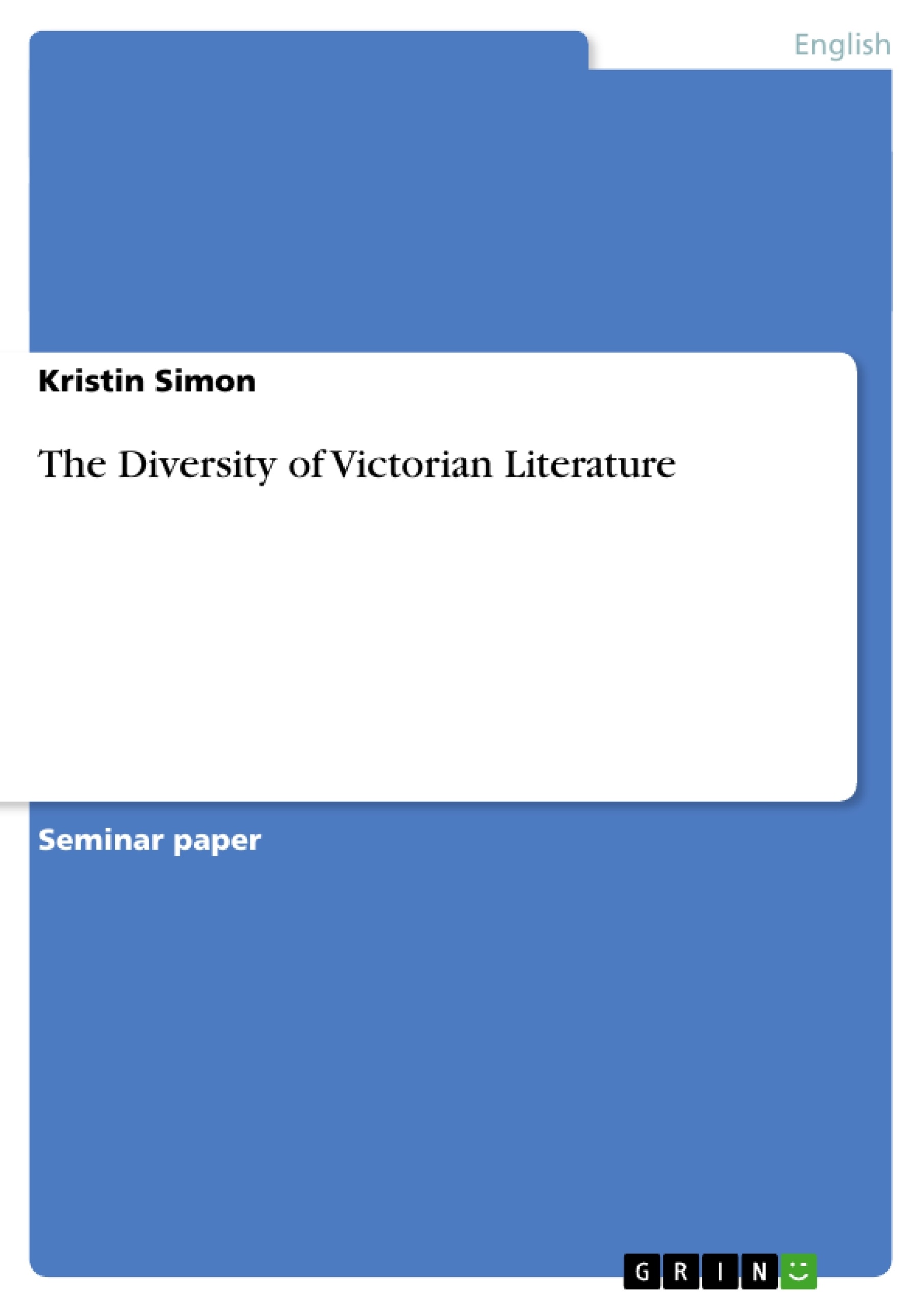The Victorian Age is marked by enormous changes. Mark Twain expressed it this way: “and yet in a good many ways the world has moved farther ahead since the Queen was born than it moved in all the rest of the two thousand put together.” (Abrams 61993 : 891). Besides industrial and social changes, the era also saw a growth in literature, and great authors like Charles Dickens or Oscar Wilde who are still read today.
Generally, the term ‘Victorian’ marks the time of Queen Victoria’s reign from 1837 till 1901, but it is often extended and for many historians it started with the passage of the first Reform Bill in 1832. Since the era comprises about seventy years, many drastic changes occurred during this time, and the distinguishing characteristics of the individual authors cannot be combined into a general mood. Consequently one cannot call it a homogenous period, and it is necessary to distinguish it into three different parts. Since the transitions were smooth, the exact division may differ between historians.
The early phase is a period of changes and growth, but it also saw a depression and demonstrations of workmen. In the 1850s the Great Exhibition in 1851 and Darwin’s “On the Origin of the Species” in 1859 can be seen as the beginning of the middle period, a time of national prosperity. England was the leading industrial power, and English confidence was at its high point. The late Victorian period covers the last two decades of the century. It can be characterized by a general change of the Victorian mood: doubts and fear of decay dominated, and literature started to shatter into various very different forms.
This term paper will give a brief overview over the conditions and the literature of the Victorian era. The diversity of the age will be shown and explained. Therefore each genre will be described separately. Furthermore I will summarize the works of major authors and while doing so show the contrasts between them.
Inhaltsverzeichnis (Table of Contents)
- Introduction
- Background information
- Social and economic conditions
- Age of Contradictions
- The literary scene
- The readership
- Topics, taboos and the temper of Victorian literature
- Victorian thoughts
- The Victorian novel
- Major novelists: Early and High Victorianism
- Charles Dickens: the central figure of Victorian literature
- Female Voices: The Brontës and Eliot
- Thackeray and Trollope
- Meredith
- Popular Genres
- The Historical Novel
- Social Fiction
- Adventure and Sensation Novels, Utopia, Nonsense Prose
- Late Victorian novels
- The general mood
- Hardy: the negative Bildungsroman
- Others
- Major novelists: Early and High Victorianism
- Victorian poetry
- Early and High Victorianism
- General Facts
- Tennyson
- The Brownings
- Pre-Raphaelites
- Others
- Late Victorian poetry
- General Facts
- Aestheticism
- Others
- Early and High Victorianism
- The Victorian drama
- The special position of the drama
- The beginning of the realistic drama
- The revival of the drama
- The influence of Ibsen
- Witty comedies and social criticism: Shaw and Wilde
Zielsetzung und Themenschwerpunkte (Objectives and Key Themes)
This term paper aims to offer a concise overview of the Victorian era's social, economic, and literary landscape. The paper examines the diverse aspects of the Victorian period and how they shaped its literature. It also explores the development and distinctions of various literary genres within this period.
- Social and economic transformations
- Contradictions and tensions in Victorian society
- The evolution of the literary scene and its diverse readership
- Key characteristics of Victorian novels and poetry
- The development and impact of Victorian drama
Zusammenfassung der Kapitel (Chapter Summaries)
The first chapter provides an introduction to the Victorian era, highlighting its significance and complexity. The second chapter dives deeper into the social and economic conditions that shaped the era, exploring concepts such as industrialization, urbanization, and the impact of the British Empire. The chapter also delves into the paradoxes and contradictions that existed within Victorian society. The third chapter focuses on the development of Victorian literature, covering various genres and the works of major authors, including Dickens, the Brontës, Eliot, Thackeray, Trollope, Meredith, and Hardy.
The fourth chapter explores Victorian poetry, analyzing the work of prominent figures like Tennyson, the Brownings, and Pre-Raphaelites. The fifth chapter examines the unique position and development of Victorian drama, emphasizing the emergence of realistic drama and the influence of Ibsen, Shaw, and Wilde.
Schlüsselwörter (Keywords)
Key terms and concepts central to this text include Victorian era, industrialization, urbanization, social reform, British Empire, Victorian literature, novel, poetry, drama, realism, social commentary, gender roles, social class, and the impact of key authors like Charles Dickens, the Brontës, George Eliot, Tennyson, and Oscar Wilde.
- Quote paper
- Kristin Simon (Author), 2005, The Diversity of Victorian Literature, Munich, GRIN Verlag, https://www.grin.com/document/41407



